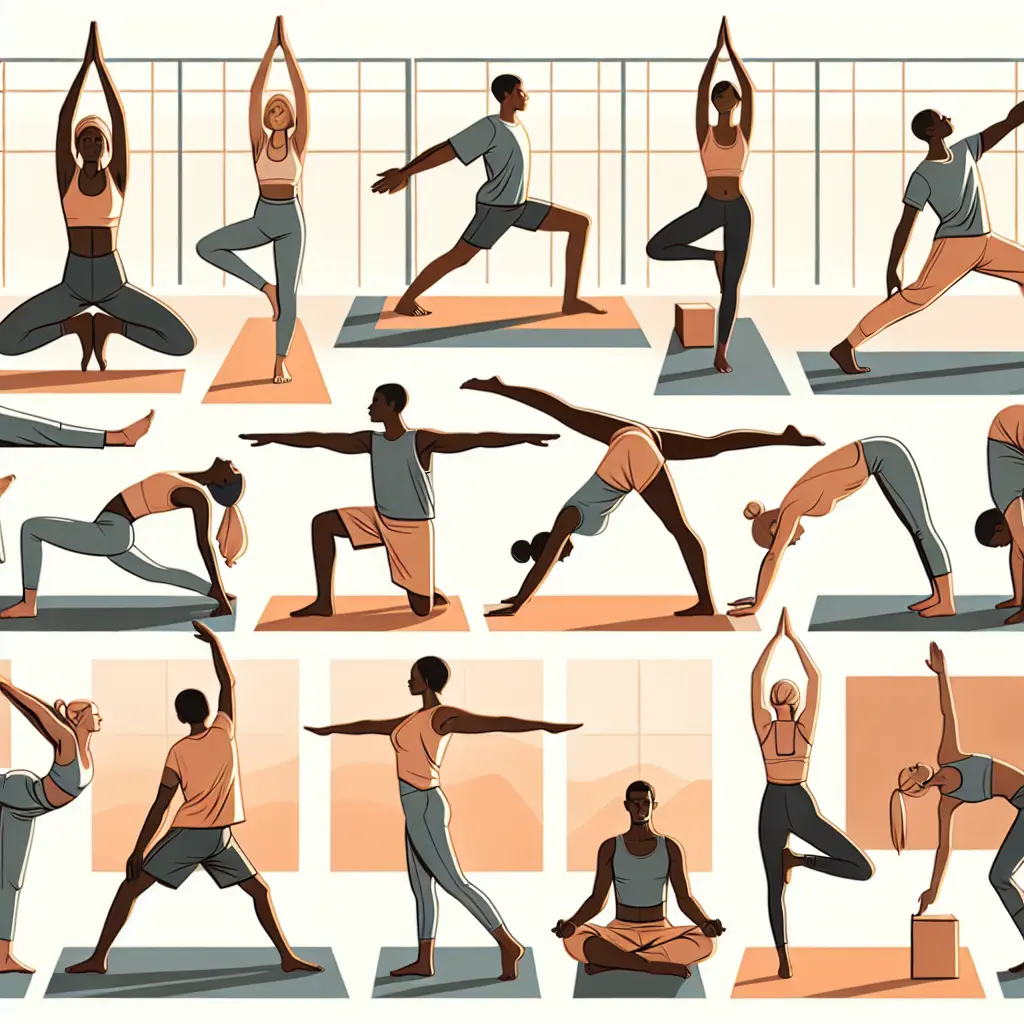
In the hustle and bustle of our daily lives, maintaining good posture and enhancing flexibility might not always top our list of priorities. However, the benefits of integrating yoga into our routine can significantly improve both. Yoga not only aids in strengthening muscles and enhancing flexibility but also plays a crucial role in correcting posture. Let's delve into how yoga poses for posture and yoga for flexibility can transform your health and wellness.
Why Focus on Posture and Flexibility?
Recent news stories underscore the importance of maintaining our physical health in unexpected ways. For instance, a disturbing incident involved a U.S. woman found in dire conditions in India, highlighting the unforeseen situations where physical strength and resilience can be vital (source needed). While this is an extreme case, it emphasizes the need for regular health and fitness routines to prepare us for any physical challenges life may throw our way.
Moreover, the trend among millennials moving into neighborhoods that cater to a leisurely lifestyle, with amenities like golf and yoga, showcases a growing awareness towards maintaining health through activities like yoga that support both mind and body wellness (source needed).
Incorporating Yoga for Spine Health and Flexibility
Yoga is profoundly beneficial for spine health. A flexibility yoga routine can alleviate back pain, enhance alignment, and strengthen the spine-supporting muscles. The following yoga poses are specifically beneficial:
- Cat-Cow Pose (Marjaryasana-Bitilasana) - Great for spine flexibility, it involves transitioning between arching your back and rounding it, which stimulates the spinal cord.
- Cobra Pose (Bhujangasana) - This gentle backbend strengthens spinal muscles and promotes spinal flexibility.
Daily Yoga Poses for Better Posture
To improve posture through yoga, incorporating daily yoga poses into your routine can be transformative. Here are some effective posture improving exercises:
- Mountain Pose (Tadasana) - This foundational pose helps in aligning your body and is one of the best yoga poses for posture correction.
- Child’s Pose (Balasana) - Though primarily a resting pose, it helps in lengthening and stretching the spine.
Yoga Stretches for Enhanced Flexibility
Flexibility is not just about performing splits or deep backbends; it’s about reducing stiffness and increasing your range of motion. Yoga stretches such as the Downward Dog (Adho Mukha Svanasana) and Pigeon Pose (Kapotasana) are excellent for increasing flexibility in the legs, hips, and back.
Advanced Yoga for Flexibility
For those who have a solid foundation and wish to challenge themselves further, advanced yoga poses can be incorporated into your routine:
- King Pigeon Pose (Raja Kapotasana) - A deeper version of the Pigeon Pose, this is excellent for opening up the hip flexors and increasing lower body flexibility.
- Wheel Pose (Chakrasana) - Ideal for enhancing spinal flexibility and strength.
Beginner Yoga Poses
If you're new to yoga, start with beginner-friendly poses:
- Warrior I (Virabhadrasana I) - Builds core strength and improves balance and posture.
- Seated Forward Bend (Paschimottanasana) - Stretches the spine and helps in relaxing your body.
Yoga Techniques for Flexibility
Incorporating specific techniques such as dynamic stretching in your yoga practice can further enhance your flexibility. This involves moving through poses gradually which increases muscle temperature and reduces stiffness.
The Role of Technology in Yoga Practice
Interestingly, technology has become an ally in practicing yoga. With gadgets like the Lenovo ThinkPad Yoga, individuals have access to yoga tutorials and online classes right at their fingertips, making it easier to engage in daily yoga practice from anywhere (source needed).
Community Response to Tragedy Through Yoga
In light of recent events such as the Southport stabbing, communities have shown resilience and solidarity often through collective gatherings including yoga sessions aimed at healing and supporting one another emotionally (source needed).
Conclusion
Yoga offers numerous benefits not just for improving posture and flexibility but also as a therapeutic modality in times of distress. Incorporating daily yoga poses into your routine can lead to significant improvements in your physical health and overall well-being.
As we wrap up, remember that the journey of yoga is personal and progressive. Whether you are a beginner or looking to advance your practice, there’s always a pose and a purpose that suits your needs. Stay consistent, stay mindful, and let the transformative power of yoga work its magic on your posture and flexibility.
Keep stretching towards better health, Harper Simmons